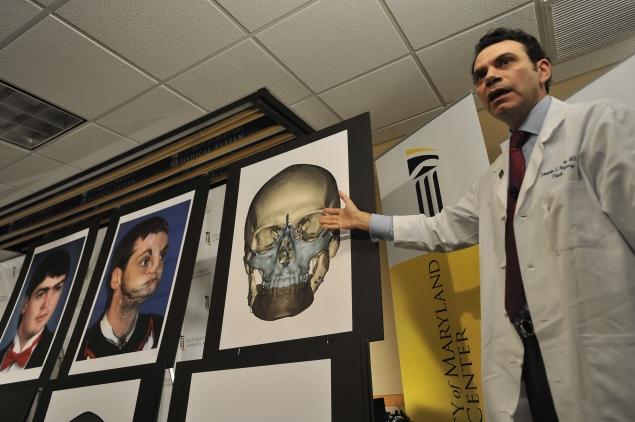
In what sounds like a science-fiction novel come to life, one scientist says he is close to being able to affix one person's head to another human body.
Italian scientist Sergio Canavero believes he has come up with an outline to successfully complete the first human head transplant in history, which could lead to solutions for those suffering from muscular dystrophy or tetraplegics with widespread organ failure.
Head transplants have been attempted since the 1950s, when Russian scientist Vladimir Demikhov experimented with dogs. Twenty years later, American neurosurgeon Robert White conducted a successful head transplant by moving the head of one monkey to the body of another. The monkey lived for several days, but because White could not connect the two spinal cords, the monkey eventually died.
Canavero describes in a recent paper a step to connect donor and recipient spinal cords - the one component that was missing from previous procedures.
But completing a head transplant is incredibly tedious, and the spinal cord fusion hasn't been tested.
Though the procedure's name suggests otherwise, the recipient would be receiving a new body, not a new head. Both the body-recipient and the body-donor's heads are severed before the recipient's is attached to a new body.
To be transplanted, the head would have to be cooled to between 55 and 59 degrees Fahrenheit. Then, the two heads must be cut at exactly the same time and in the same operating room. Surgeons then have one hour to connect the head to the donor body, which is also cooled and placed under cardiac arrest.
Canavero's new development to connect the spinal cords is called the GEMINI procedure, during which surgeons cut the cooled spinal cords with extremely sharp blades.
"It is this 'clean cut' the key to spinal cord fusion, in that it allows proximally severed axons to be 'fused' with their distal counterparts," Canavero writes in his paper.
Canavero says in his paper that some chemicals - such as polyethylene glycol, or PEG - can then be used to immediately fuse the spinal cords.
"PEG is easy to administer and has a strong safety record in man," Canavero writes.
Once the spinal cords of the recipient and donor are successfully connected, the body's heart can be restarted, pumping blood into the brain, and "normal temperatures will be reached within minutes."
Canavero says that there is still much work to be done - the spinal cord fusion needs to be tested, and he says he has not addressed the ethical aspects of the procedure. But the surgery, he writes, could eventually provide a possible cure for those with conditions that leave the brain functioning while affecting the rest of the body, like progressive muscular dystrophies, or "several genetic and metabolic disorders of youth."
"These are a source of huge suffering, with no cure at hand," Canavero writes.



I'd encourage Dr. Rodriguez to proceed with the tests first on
psychopaths; no need to addressed the ethical aspects of the
procedure - they have no human sensations anyway!...